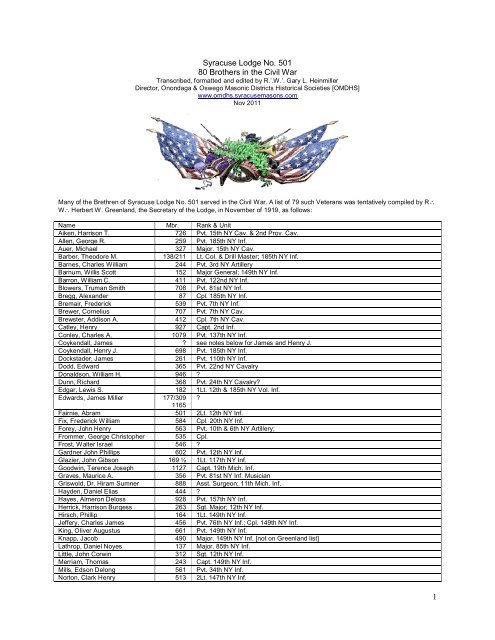


On June 16, 1862, Brothers James and Alexander Sandy Campbell fought each other on opposite sides of the Battle of Secessionville, which was the first major attempt by federal troops to regain Charleston.At the end of the war, both brothers returned home the same evening, William in a "resplendent uniform of a Major in the Federal Army", and several hours later, Anthony in "rags with a 'taterhill' hat." As cited in the book, "A Century of Wayne County, Kentucky", brothers Anthony and William McBeath fought on opposite sides of the Civil War, Anthony for the Confederate Army, and William for the Union Army.On November 7, 1861, at the Battle of Port Royal, Union Navy Commander Percival Drayton of the USS Pocahontas battled Confederate forces on shore commanded by his brother General Thomas F.The Terrill brothers were also brigadier generals on opposite sides of the conflict: James Barbour Terrill within the Confederate Army (killed at the Battle of Totopotomoy Creek) and William Rufus Terrill within the Union Army (killed at the Battle of Perryville).Crittenden briefly commanded the 2nd Division of the Army of Central Kentucky, but was relieved of duty and arrested for drunkenness on March 31, 1862. In 1861, George was promoted to brigadier general on August 15 and briefly commanded a brigade in the Army of the Potomac before he was assigned the District of East Tennessee in November. The Crittenden brothers were brigadier generals on opposite sides of the conflict: George Bibb Crittenden within the Confederate Army and Thomas Leonidas Crittenden within the Union Army.The battle is also notable for being the only time in United States military history that two regiments from the same state with the same numerical designation have engaged each other in battle. William Goldsborough of the Confederate 1st Maryland Infantry captured his brother Charles Goldsborough of the Union 1st Maryland Infantry and took him prisoner.

On May 23, 1862, at the Battle of Front Royal, Capt.Martin, each had brothers stationed at the camp. Nathan Bedford Forrest was ordered to probe the strength of Union troops in and around Camp Calhoun, Kentucky.


 0 kommentar(er)
0 kommentar(er)
